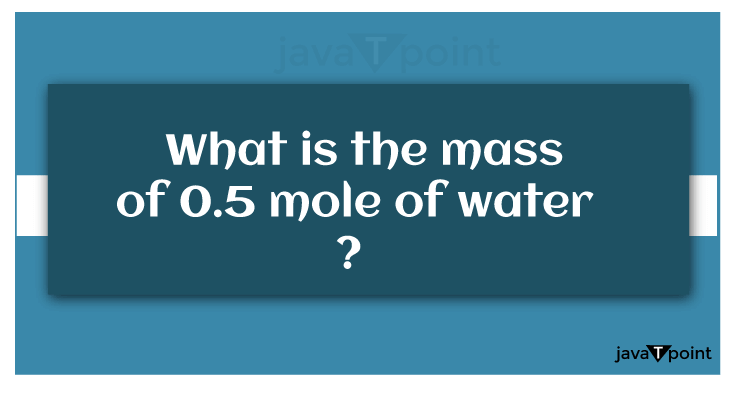What Is The Mass Of 0.5 Mole Of Water Molecule?The molecular weight or mass of a molecule is its mass. The sum of all the atomic masses of the molecules' building blocks is represented by this number. Daltons, which are atomic mass units typically used to express molecular mass, are one such unit. 
Understanding the different atomic masses of a compound's component molecules is necessary for molecular mass calculations. The periodic table shows where these atomic masses are. Once you know the atomic masses, you can add them with ease based on the number of atoms of each element there are in the molecule. Since it is used to calculate stoichiometry, carry out calculations involving chemical processes, and evaluate the composition of substances, the molecular mass is significant in a variety of scientific fields, including chemistry and biochemistry. Understanding the Concept of MoleSince it enables the relationship between a substance's mass and particle count, the mole is a fundamental term in chemistry. The ability to express the number of moles involved in chemical reactions, which dictates the number of reactants needed and the number of products produced, makes this crucial. The amounts of reactants and products that will be produced may thus be predicted and calculated more easily. Avogadro's number, or roughly 6.022*1023 particles per mole of a substance, is a measurement of particle density. As a result, 6.022*1023 particles make up one mole of any given substance. One mole of carbon dioxide has 6.022*1023 molecules, whereas one mole of water has 6.022*1023 molecules. The molar mass, or the mass contained in one mole of a substance, can be determined using the mole as well. A molecule's molar mass, which is expressed in grams per mole (g/mol), can be calculated by adding up the atomic masses of its constituent atoms. A good example is water, which has a molar mass of 18 g/mol and is made up of two hydrogen atoms and one oxygen atom. CalculationTo calculate the mass of a particular quantity of moles, we must first determine the substance's molar mass. Molar mass, expressed in grammes per mole (g/mol), is the weight of one mole of a substance. Summing the atomic masses of the elements that make up the molecule will yield the molar mass of water (H2O). As opposed to hydrogen, which has an atomic mass of around 1 g/mol, oxygen has an atomic mass of about 16 g/mol. The molar mass of water is as follows in light of this: (18 g/mol) = (2 * 1 g/mol) + (1 * 16 g/mol) = 2 g/mol + 16 g/mol According to this, a mole of water weighs 18 grams. Calculate the mass of 0.5 moles of water now. Since we know that water has a molar mass of 18 g/mol, we can use the following equation to calculate the mass: -Molar mass (g/mol) is calculated as mass (g) * number of moles. -Adding the values as replacements in the equation: -18 g/mol is the mass of 0.5 mol of water. -0.5 moles of water have a mass of -9 grams. To understand this calculation further, let's break it down step by step:
The mole is a crucial unit of measurement since it allows us to relate a substance's mass to the number of atoms or molecules it contains. Avogadro's number, which equals approximately 6.022*1023 particles (atoms, molecules, or ions) in a mole of a substance, is a mathematical concept. The number of water molecules in a mole of water is consequently 6.022*1023. The concept of moles and the molar mass of a substance can be used to easily convert between the amount of material (in moles) and its corresponding mass (in grammes). Making solutions, assessing the composition of substances, and determining the quantities of reactants and products in chemical reactions all depend on this calculation. |
 For Videos Join Our Youtube Channel: Join Now
For Videos Join Our Youtube Channel: Join Now
Feedback
- Send your Feedback to [email protected]
Help Others, Please Share









